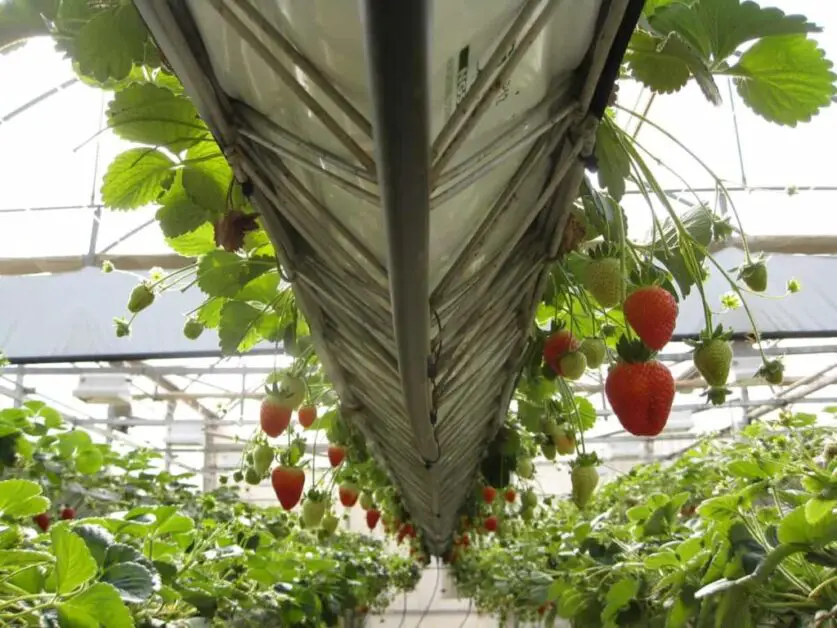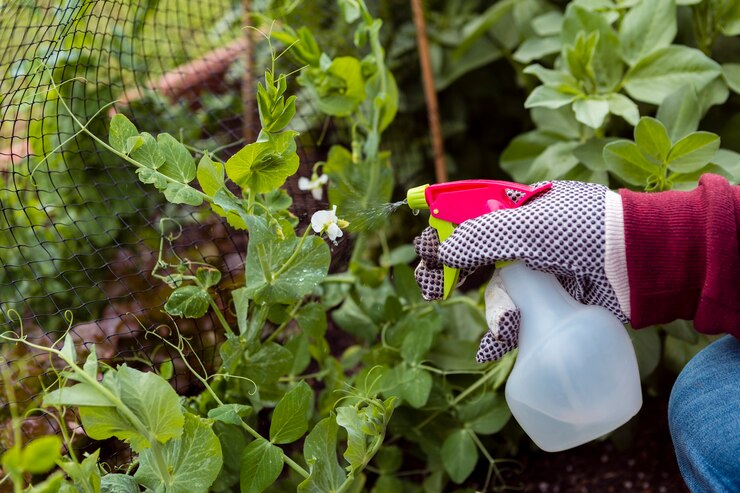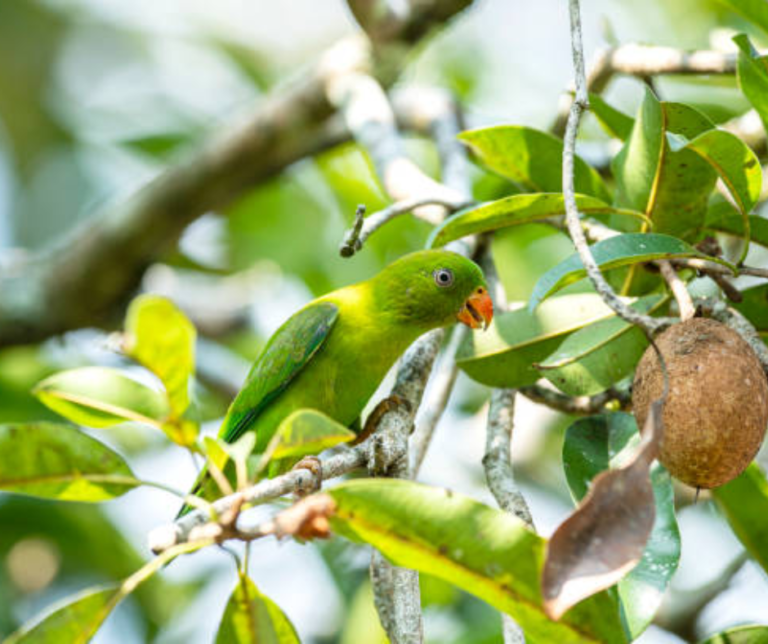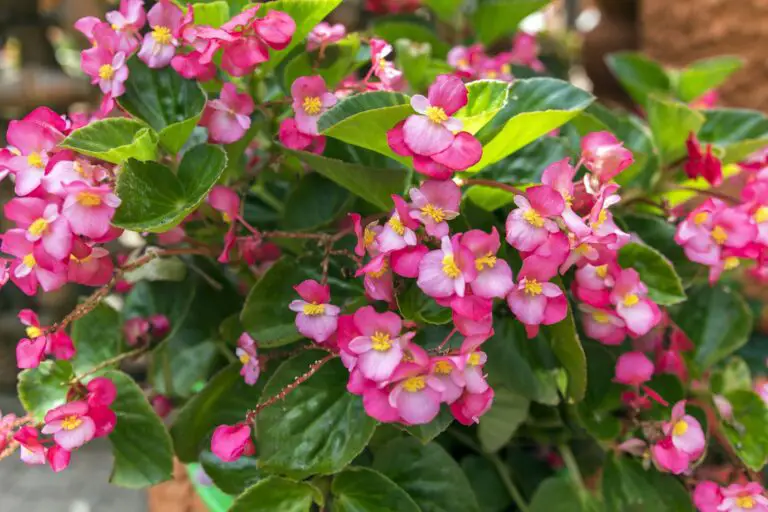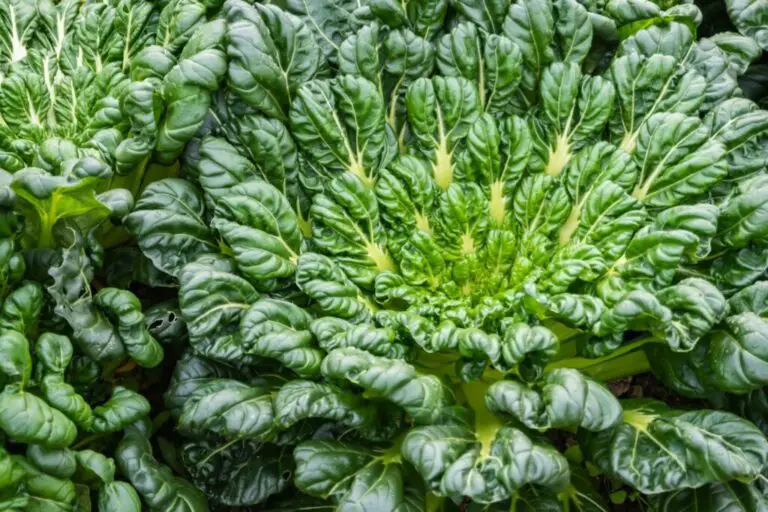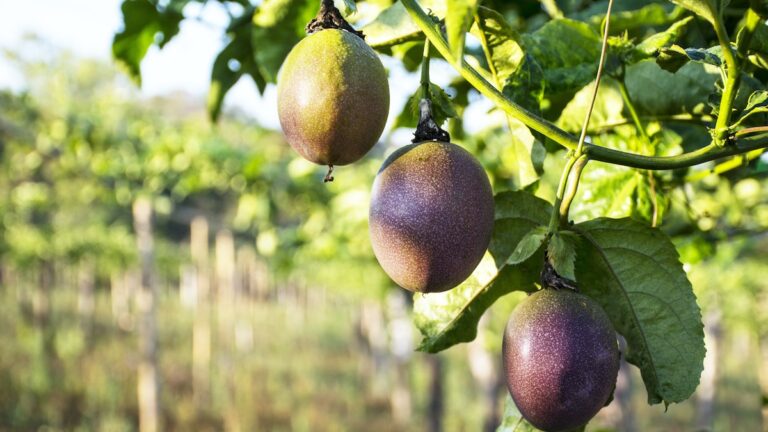Maximizing Strawberry Yields with Coco Coir and Vertical Farming Techniques
Did you know you can supercharge your strawberry yields using just coco coir and some smart vertical farming techniques? It’s true! Forget traditional soil beds – with the right setup, you can grow plump, juicy strawberries year-round, even in the tiniest of spaces. But how exactly does it work? In this guide, we’ll dive deep into the world of coco coir and vertical farming, revealing insider tips and tricks to maximize your strawberry harvest like never before. From choosing the perfect coco coir mix to mastering vertical growing strategies, we’ve got you covered. Get ready to elevate your strawberry game and reap the sweet rewards!
Table of Contents
Benefits of Vertical Farming for Strawberry Production
Vertical farming has gained significant attention in recent years due to its numerous benefits for strawberry production. One of the key advantages is the ability to maximize space utilization. Traditional strawberry farming often requires vast expanses of land, limiting the potential for cultivation in urban areas or regions with limited available land.
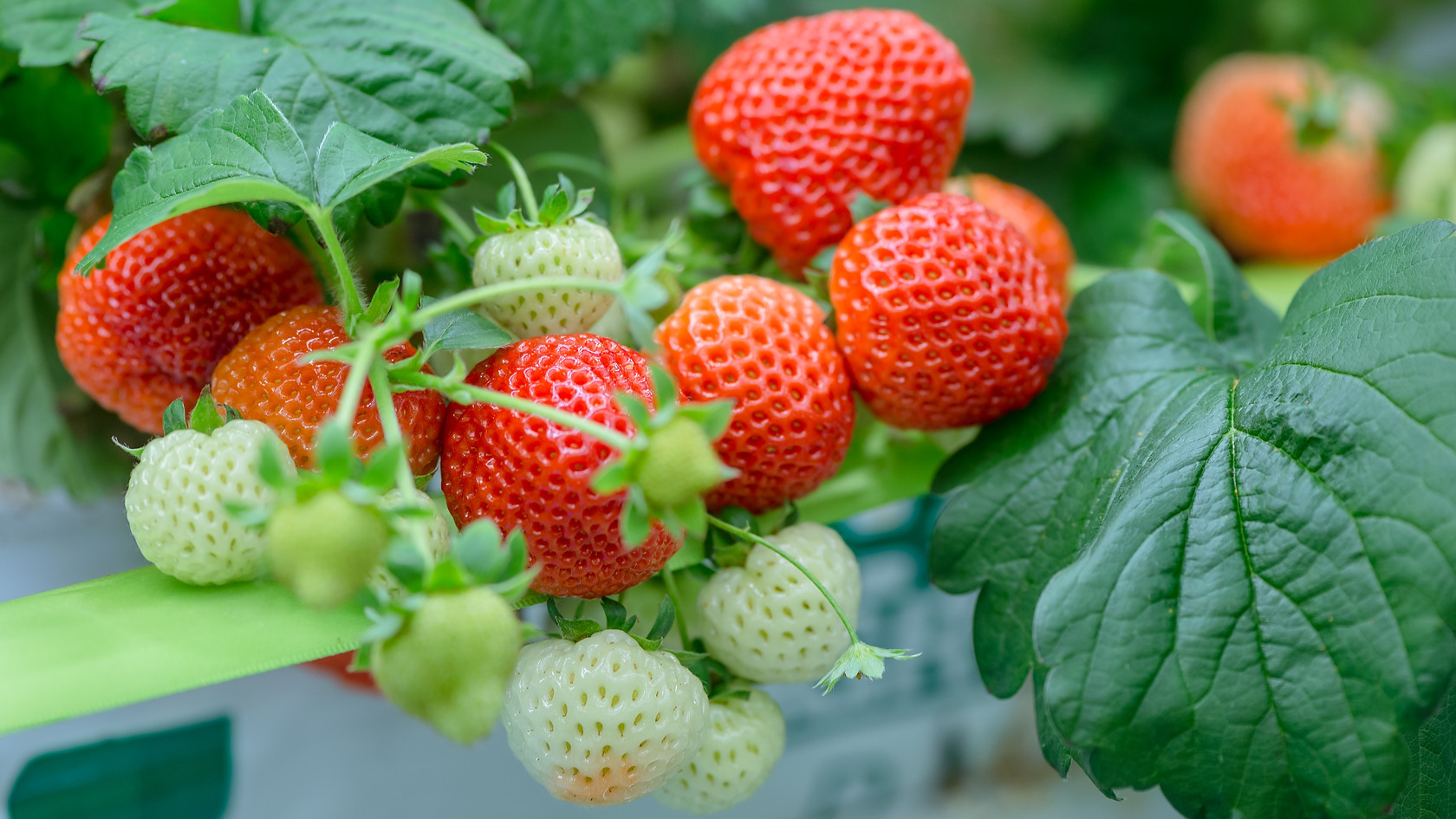
- Space Efficiency:
- Vertical farming stacks multiple layers of plants, maximizing land use.
- Higher crop yields can be achieved in a smaller footprint.
- Urban Agriculture Opportunities:
- Vertical farming enables cultivation in urban areas with limited space.
- Reduces the distance between production and consumption, resulting in fresher strawberries.
- Year-Round Optimal Conditions:
- Controlled environment agriculture techniques (temperature, humidity, lighting) maintain ideal growing conditions.
- Consistent strawberry harvest regardless of external weather.
- Pest and Disease Control:
- The controlled environment minimizes risks.
- Reduces the need for pesticidal treatments, improving strawberry health and quality.
Vertical farming emerges as a sustainable and efficient method for strawberry production, addressing challenges faced by traditional farming practices. 🍓🌱
In the following sections, we will dive deeper into the specific practices and techniques involved in vertical farming for strawberries, exploring how coco coir, nutritious requirements, irrigation techniques, and other factors can further enhance strawberry yields in this innovative farming approach.
“Vertical Gardening: Grow Up, Not Out, for More Vegetables and Flowers in Much Less Space” revolutionized my approach to gardening. The book’s practical tips and comprehensive guide empowered me to transform my limited gardening space into a lush, productive oasis. From DIY projects to plant selection advice, every aspect of vertical gardening was covered concisely, making it accessible even for beginners like myself.
Thanks to this book, I’ve achieved higher yields and a more visually appealing garden without needing to expand horizontally. It’s a must-have resource for anyone looking to maximize their garden space and unleash their creativity in vertical gardening endeavors.
- Comprehensive Guide: The book provides a comprehensive guide to vertical gardening, covering various techniques, materials, and plant selections.
- Practical Tips: Offers practical tips and advice for maximizing space and achieving higher yields in small areas.
- Inspiring Ideas: Includes inspiring ideas and designs for vertical gardens, suitable for both beginners and experienced gardeners.
- Illustrations and Photos: Features illustrations and photos to demonstrate vertical gardening concepts and inspire creativity.
- Plant Selection: Provides recommendations for suitable plants for vertical growing, including vegetables, flowers, and herbs.
- DIY Projects: Includes DIY projects and instructions for building vertical gardening structures using readily available materials.
- Environmental Benefits: Discusses the environmental benefits of vertical gardening, such as water conservation and urban greening.
- Educational Content: Offers educational content on plant care, soil management, and pest control specific to vertical gardening.
- Accessible Language: Written in accessible language, making it easy for readers of all gardening skill levels to understand and apply the principles of vertical gardening.
- Limited Depth: Some readers may find that certain topics are covered superficially, lacking in-depth information or advanced techniques.
- Region-Specific Advice: The book may contain advice or recommendations that are more applicable to certain regions or climates, limiting its universal appeal.
- Focus on Specific Plants: While it covers a variety of plants suitable for vertical gardening, it may focus more on specific plants or species, neglecting others.
- Assumes Prior Knowledge: Assumes some prior knowledge of gardening basics, which may be challenging for complete beginners.
- Minimal Troubleshooting: Provides limited troubleshooting advice for common issues encountered in vertical gardening, leaving readers to seek additional resources.
- Requires Adaptation: Readers may need to adapt the techniques and ideas presented in the book to suit their specific space, resources, and preferences.
- Dependent on Space: Some techniques may require ample space or specific structural support, which may not be feasible for all gardeners.
The Role of Coco Coir in Vertical Farming for Strawberry Yields
Coco coir, derived from the fibrous husk of coconuts, plays a vital role in vertical farming for strawberry yields. Its unique properties make it an excellent choice for growing strawberries in this innovative farming method.
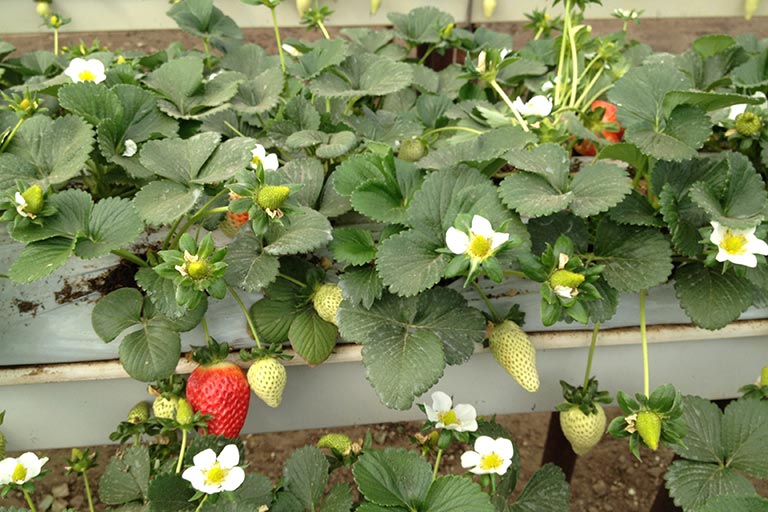
- Water Retention: Coco coir’s high water retention capabilities provide consistent moisture to strawberry plants, preventing waterlogging common in soil-based systems.
- Air Porosity: Excellent air porosity of coco coir enhances root development and nutrient uptake in strawberries, promoting healthier growth.
- Sustainability: Coco coir promotes sustainability in vertical farming as a renewable and biodegradable resource, aligning with eco-friendly cultivation practices.
- pH Stability: Acting as a natural buffer, coco coir maintains stable pH levels in the root zone, crucial for strawberries’ preference for slightly acidic conditions.
- Optimal Nutrient Availability: Stable pH environment facilitated by coco coir ensures optimal nutrient availability for strawberries, leading to healthier growth and increased yields.
- Pathogen-Free: Coco coir is free from pathogens and weed seeds, reducing the risk of diseases and weed infestation in vertical farm systems.
In summary, coco coir plays a vital role in maximizing strawberry yields in vertical farming. Its water retention, air porosity, pH stabilization, and sustainability make it an ideal choice for creating an optimal growing environment for strawberries, resulting in healthier plants and higher yields while minimizing environmental impact.
By harnessing the benefits of coco coir, vertical farmers can optimize strawberry production and contribute to the advancement of sustainable agriculture.
Understanding the Nutritional Requirements of Strawberries in Vertical Farms
Strawberries are delicate plants that require specific nutritional requirements to thrive in vertical farming systems. Understanding these requirements is essential for ensuring optimal growth and maximizing yields.
nitrogen
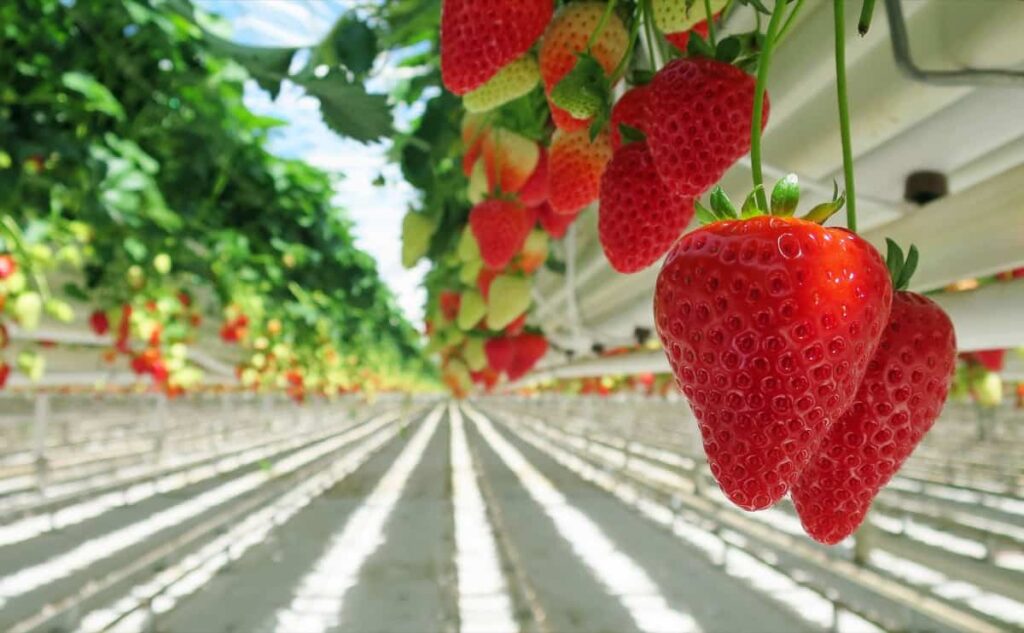
One key nutrient that is crucial for strawberries is nitrogen. This essential element is responsible for promoting leaf and stem growth, as well as enhancing the overall vigor of the plants. In vertical farms, where the plants are grown in controlled environments, it is important to provide nitrogen in a readily available form. This can be achieved through the use of specially formulated hydroponic fertilizers that contain a balanced ratio of nitrogen, phosphorus, and potassium.
Phosphorus
Phosphorus is another important nutrient for strawberries, as it plays a vital role in root development and flower formation. Adequate levels of phosphorus should be maintained throughout the growing season to ensure the healthy establishment of new plants and to promote robust flowering and fruit production.
Potassium
Potassium is essential for the overall health of strawberry plants in vertical farms. It helps regulate water uptake and plays a vital role in photosynthesis and energy metabolism. Maintaining adequate levels of potassium in the nutrient solution is crucial for ensuring strong and productive plants.
In addition to these macronutrients, strawberries also require various micronutrients, such as iron, manganese, zinc, and boron, in trace amounts. These micronutrients are necessary for proper plant growth and development and should be supplied through the nutrient solution or through foliar applications.
By understanding the nutritional requirements of strawberries in vertical farms, growers can tailor their nutrient management strategies to meet the specific needs of these plants. This, in turn, will contribute to healthier plants, increased yields, and better overall crop quality.
Choosing the Right Coco Coir for Strawberry Cultivation in Vertical Farms
When it comes to choosing the right coco coir for strawberry cultivation in vertical farms, there are several important considerations to keep in mind.

- Coco coir, which is a natural and biodegradable substrate made from coconut husks, has become increasingly popular among vertical farmers due to its numerous benefits.
- However, not all coco coir products are created equal, and selecting the right one can have a significant impact on the overall success of your strawberry crops.
- First and foremost, it is crucial to ensure that the coco coir you choose is of high quality and free from contaminants.
- Look for coco coir that has been treated and processed properly to remove any unwanted substances, such as salts or pathogens, that could harm your plants.
- Additionally, opt for coco coir that has been well-aged, as this helps to enhance its water holding capacity and nutrient retention capabilities.
By selecting coco coir that meets these criteria, you can provide your strawberry plants with a clean and balanced growing medium that supports their healthy development.
Preparing Coco Coir for Optimal Strawberry Growth in Vertical Farms
To ensure optimal strawberry growth in vertical farms, it is essential to properly prepare and utilize coco coir as a growing medium. Coco coir, derived from the fibrous husks of coconuts, offers several advantages in vertical farming due to its excellent water retention, aeration, and nutrient holding capacity. By following the right steps in preparing coco coir, vertical farmers can create an ideal environment for strawberries to thrive and yield abundant fruits.

- Rehydration: Begin by soaking compressed coco coir bricks or blocks in water to expand and loosen the fibers. Ensure thorough saturation by submerging the coir in a container of water, allowing every part to soak.
- Drain Excess Moisture: After absorbing water, drain excess moisture from the coco coir to prevent oversaturation and potential root rot. This step ensures a well-balanced moisture level for healthy strawberry growth.
- pH Adjustment: Coco coir naturally has a high pH, which may not be ideal for strawberries. Rinse the rehydrated coco coir with slightly acidic water to adjust pH levels, creating an optimal growing environment.
- Nutrient Enhancement: While coco coir contains some natural nutrients, supplement with organic fertilizers or hydroponic nutrient solutions to enhance nutrient content for optimal strawberry growth.
- Ensure Proper Drainage: Before planting, ensure adequate drainage within the vertical farms system to prevent waterlogging and diseases. Implement drip irrigation systems or containers with drainage holes to maintain optimum moisture levels.
By following these steps to prepare coco coir for optimal strawberry growth in vertical farms, farmers can create an ideal growing environment that promotes healthy plant development and abundant fruit yield. Proper rehydration, pH adjustment, nutrient enhancement, and drainage management are key factors in maximizing the potential of strawberries grown using coco coir as a growing medium.
The Importance of Proper Irrigation Techniques in Maximizing Strawberry Yields
Proper irrigation techniques play a crucial role in maximizing strawberry yields in vertical farms. As a key component of hydroponic systems, irrigation directly impacts the growth, development, and overall health of strawberry plants. By supplying the plants with the right amount of water at the right time, growers can optimize nutrient uptake, avoid water stress, and ensure the production of high-quality strawberries.
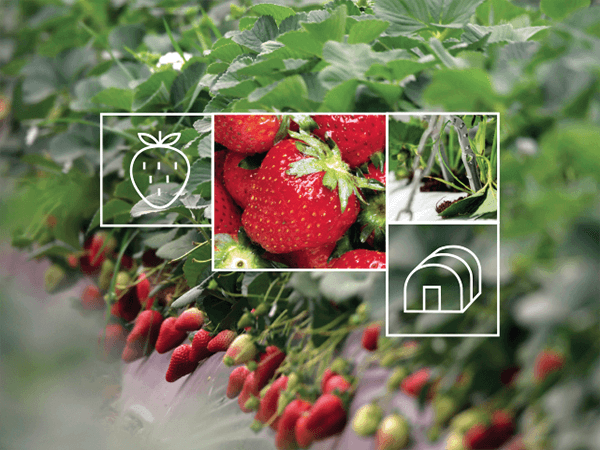
- Balanced Water Availability:
- Overwatering can lead to oxygen deprivation, negatively impacting root growth and plant health.
- Underwatering disrupts nutrient absorption and limits overall productivity.
- Regular monitoring of soil moisture levels is crucial.
- Automated Systems and Indicators:
- Implement automated systems (e.g., soil moisture sensors) or use indicators (e.g., weighing lysimeters, tensiometers).
- Accurately determine when and how much water to apply for optimal strawberry growth.
- Efficient Irrigation Practices:
- Use drip irrigation or ebb and flow systems.
- Minimize water wastage and deliver water directly to the root zone.
- Reduces the risk of disease and nutrient runoff.
- Maximizing Yields and Quality:
- Proper irrigation ensures healthy plant growth and optimal nutrient uptake.
- Abundant and high-quality strawberries are the result.
Embracing these practices contributes to sustainable and resource-efficient strawberry production in vertical farming. 🍓🌱
The Botanicare Ebb and Flow Fitting Extensions have been a game-changer in optimizing my hydroponic gardening setup. Their simple installation process made it easy for me to extend my existing Ebb and Flow system, providing enhanced flexibility and customization options. With these extensions, I could effortlessly tailor my hydroponic system to meet the specific needs of different plant varieties, ensuring optimal water distribution and root health.
Moreover, the durability of the fittings gave me peace of mind, knowing that my system would withstand the rigors of continuous use. Whether I needed to expand my growing space or improve drainage efficiency, these extensions delivered reliable performance and contributed to the overall success of my hydroponic gardening endeavors. If you’re looking to maximize the potential of your Ebb and Flow system, the Botanicare Fitting Extensions are a worthy investment that will undoubtedly elevate your gardening experience.
✅ Easy Installation: The fittings are easy to install, requiring minimal tools and expertise, saving time and effort during setup.
✅ Customization Options: Allows users to customize their Ebb and Flow system according to their specific needs and preferences.
✅ Improved Drainage: Enhances drainage efficiency by extending the reach of the fittings, ensuring optimal water flow throughout the system.
✅ Durable Construction: Made from high-quality materials, ensuring durability and longevity even in demanding hydroponic environments.
✅ Cost-Effective: Provides a cost-effective solution for expanding or modifying existing Ebb and Flow systems without needing to purchase a completely new setup.
✅ Enhanced Water Distribution: Helps distribute water evenly across the growing medium, promoting healthy root development and plant growth.
✅ Compatibility with Accessories: Compatible with various accessories such as trays, reservoirs, and grow lights, offering seamless integration into existing setups.
✅ Manufacturer Reputation: Botanicare is a trusted manufacturer known for producing high-quality hydroponic equipment, ensuring reliability and performance.
❌ Additional Cost: Purchasing additional fittings may incur extra costs, especially for larger or more complex system configurations.
❌ Limited Availability: May be less readily available compared to more common hydroponic fittings, requiring special ordering or sourcing.
❌ Compatibility Concerns: Users should ensure compatibility with their existing Ebb and Flow system components to avoid compatibility issues or leaks.
❌ Installation Complexity: While relatively easy to install, users may encounter challenges if they lack experience with hydroponic system assembly or plumbing.
❌ Maintenance Requirements: Requires periodic maintenance to ensure proper function and prevent clogs or leaks, adding to ongoing system upkeep tasks.
❌ Size Limitations: The extensions may have size limitations, restricting their use in larger or more extensive hydroponic setups.
❌ Risk of Leakage: Improper installation or wear over time may lead to leakage, potentially damaging the surrounding area or compromising plant health.
❌ Dependence on System Design: Effectiveness may vary depending on the overall design and layout of the Ebb and Flow system, requiring careful consideration during installation and use.
Implementing Controlled Environment Agriculture to Boost Strawberry Production
Controlled environment agriculture (CEA) holds immense potential for boosting strawberry production in vertical farms. By creating an optimized environment with precise control over temperature, humidity, lighting, and other variables, vertical farms can provide ideal growing conditions for strawberries throughout the year. This technology allows farmers to overcome the limitations imposed by traditional outdoor cultivation, such as seasonal fluctuations and unpredictable weather conditions.
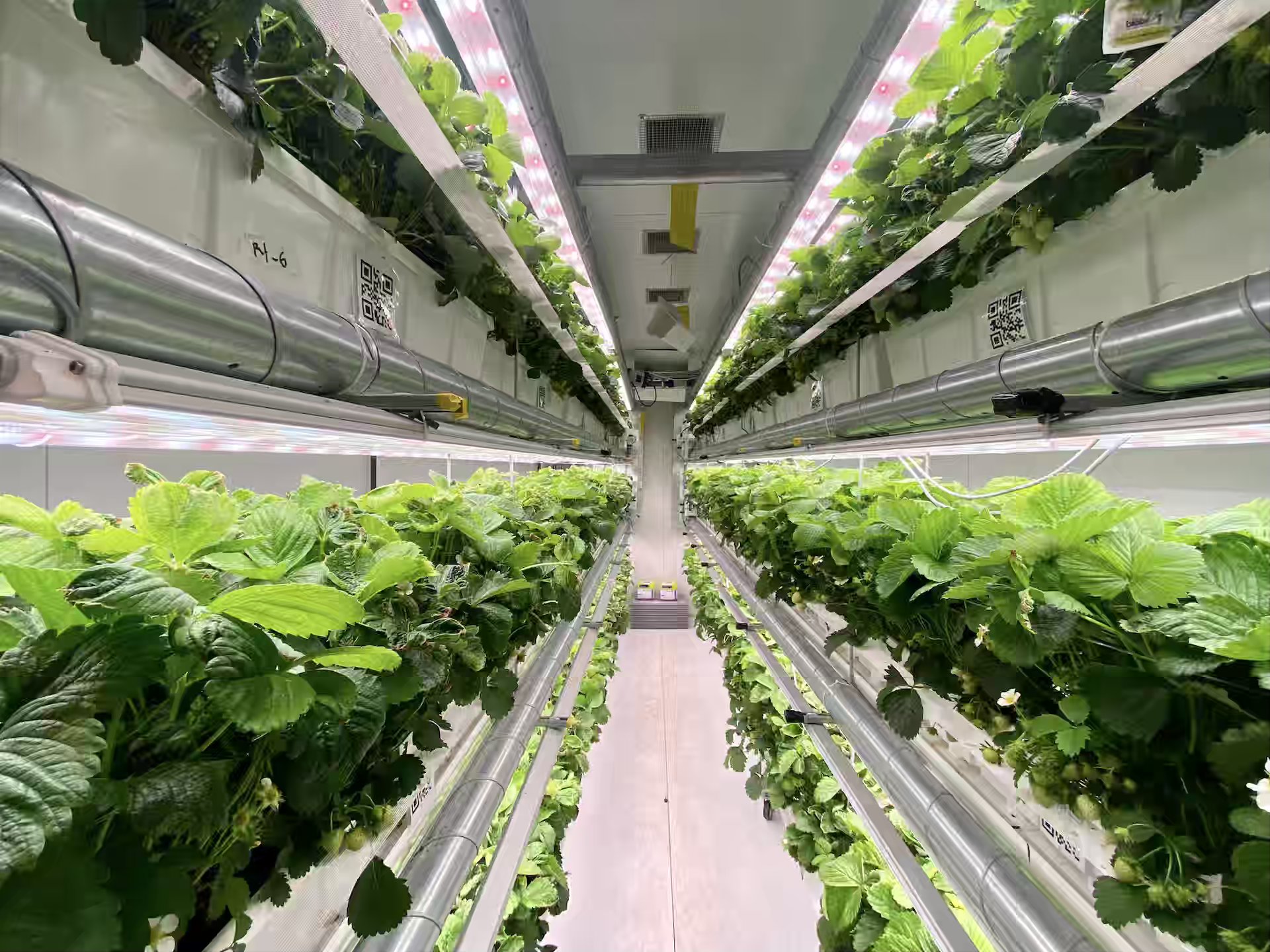
Managing Temperature and Humidity in Vertical Farms for Strawberry Cultivation
Temperature and humidity are critical factors to consider when managing a vertical farm for strawberry cultivation. Maintaining optimal temperature and humidity levels ensures that strawberries receive the ideal growing conditions for healthy development and maximum yields.
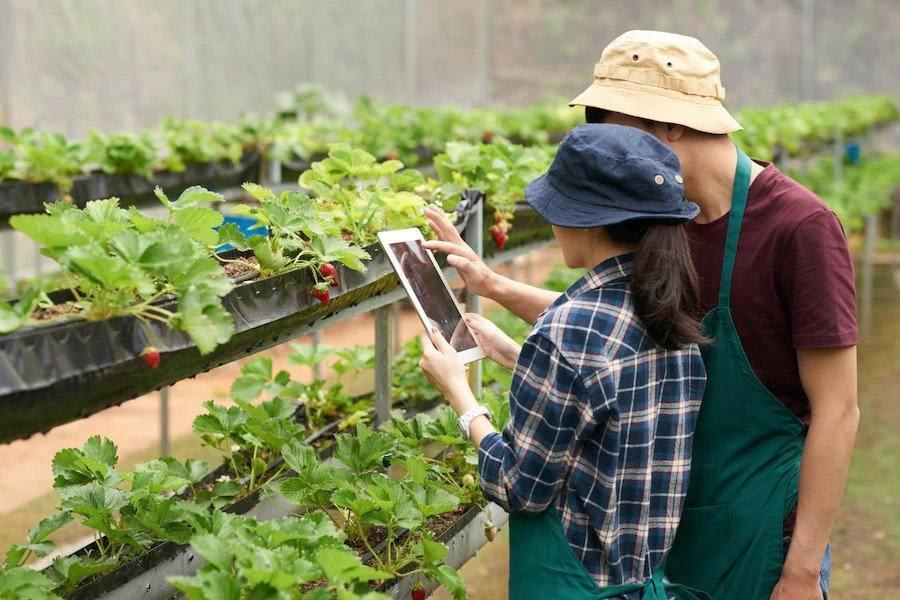
- Temperature Regulation: Ensure the temperature within the vertical farm falls within the optimal range of 60 to 80 degrees Fahrenheit (15 to 27 degrees Celsius) for strawberry growth.
- Temperature Impact: Temperatures below or above this range can hinder plant growth or lead to increased disease susceptibility and poor fruit quality, emphasizing the importance of temperature control.
- Humidity Management: Maintain relative humidity levels around 60-70% to prevent fungal diseases like powdery mildew and avoid dehydration-induced stunted growth.
- Consider Varietal Needs: Different strawberry cultivars may have specific temperature and humidity preferences, so it’s crucial to consider their individual needs.
- Advanced Climate Control: Utilize advanced climate control systems in vertical farms, including ventilation, evaporative cooling, and dehumidification, to regulate temperature and humidity levels effectively.
- Optimize Growth Conditions: By carefully monitoring and adjusting temperature and humidity factors, growers can create an ideal environment that maximizes strawberry yields and promotes healthy plant growth.
It is essential for vertical farm operators to regularly monitor temperature and humidity levels using reliable sensors and equipment. By ensuring that these factors are within the appropriate ranges, growers can provide their strawberry plants with the perfect environment for healthy growth and bountiful harvests.
Utilizing Artificial Lighting in Vertical Farms for Enhanced Strawberry Yields
Artificial lighting plays a crucial role in optimizing strawberry yields in vertical farming systems. By providing supplemental light, farmers can extend the photoperiod, ensuring that strawberry plants receive the necessary light duration for optimal growth and fruit production. This is especially important in regions with limited sunlight or during shorter winter days when natural light may be insufficient.

- Controlled Light Spectrum:
- Vertical farming allows precise control over light spectrum, intensity, and duration.
- Mimics ideal conditions for strawberry plants.
- LED Lights for Efficiency:
- LED lights are preferred due to their energy efficiency.
- Emit specific wavelengths beneficial for plant growth.
- Enhanced Growth and Yield:
- Studies show that blue and red LED wavelengths enhance vegetative growth, flowering, and fruiting in strawberries.
- Year-round production is achievable by simulating longer days during off-seasons.
- Increased Overall Yields:
- Extended growing period ensure a constant supply of strawberries.
- Careful lighting adjustments optimize plant growth and productivity.
In addition to lighting, other environmental factors such as temperature, humidity, and CO2 levels need to be monitored and controlled in vertical farms to provide an ideal growing environment for strawberry plants. By combining artificial lighting with precise management of these factors, growers can maximize the potential of their vertical farming systems and achieve enhanced strawberry yields.
Optimizing Vertical Farm Layouts for Efficient Strawberry Production
The layout of a vertical farm plays a crucial role in optimizing strawberry production. By strategically designing the arrangement of plants, growers can maximize space utilization and create an efficient workflow.
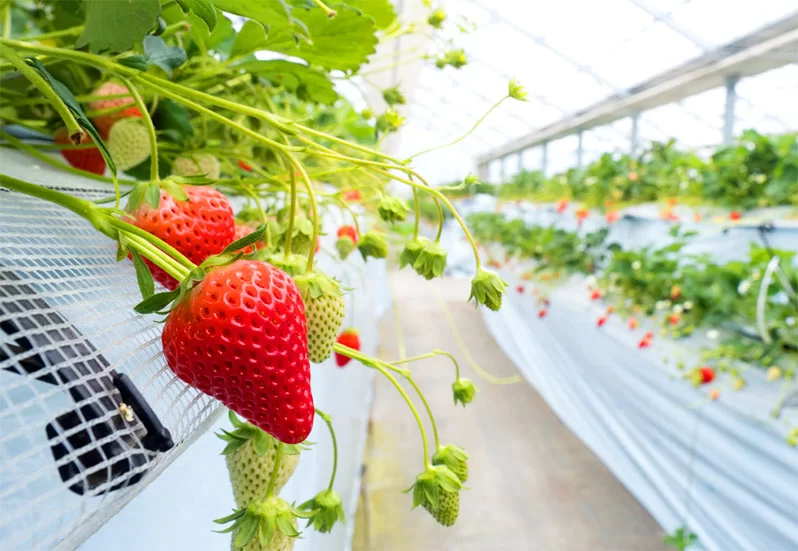
- Plant Spacing: Adequate spacing between strawberry plants promotes proper air circulation and access to light, reducing disease risk and fostering healthy growth. Xiong et al. (2019) found that a spacing of 25 centimeters between plants in a vertical farm layout resulted in higher yields.
- Irrigation System Placement: Positioning irrigation systems at appropriate intervals ensures efficient water distribution, crucial for successful cultivation. By installing drip irrigation or aeroponics systems at appropriate intervals, growers can ensure that each plant receives the required amount of water and nutrients. Research by Zhang et al. (2018) showed that evenly spaced irrigation systems led to more consistent yields and improved water efficiency.
- Lighting System Arrangement: Proper positioning of artificial lighting systems is essential to provide the right amount and quality of light for strawberry growth. Smith et al. (2020) demonstrated that a vertically integrated lighting system combined with reflective surfaces improved light penetration and resulted in higher yields.
By carefully considering plant spacing, irrigation system positioning, and lighting arrangements, growers can optimize the layout of their vertical farms for efficient strawberry production. Adopting these strategies not only maximizes space utilization but also promotes healthy plant growth and higher yields.By implementing these strategies, growers can optimize their vertical farm layouts for efficient strawberry production, maximizing space utilization while promoting healthy plant growth and achieving higher yields.
Proper Plant Spacing and Density for Maximizing Strawberry Yields in Vertical Farms
Proper plant spacing and density play a crucial role in maximizing strawberry yields in vertical farms. By carefully determining the distance between plants and the number of plants per unit area, growers can optimize the utilization of available space and resources, ultimately resulting in higher strawberry production.
Proper Plant Spacing and Density for Maximizing Strawberry Yields in Vertical Farms
| Aspect | Recommendations |
|---|---|
| 1. Vertical Tower Design | – Adjustable Heights: Design towers with adjustable levels to accommodate varying plant heights. |
| – Optimized Airflow: Ensure open structures for proper airflow, minimizing disease risks. | |
| – Stackable Systems: Implement stackable systems to utilize vertical space efficiently. | |
| 2. Plant Spacing within Towers | – Tiered Arrangement: Space plants strategically on tiers to receive optimal light and nutrients. |
| – Consider Growth Stages: Space plants based on growth stages to prevent overcrowding. | |
| – Avoid Shade Casting: Position plants to avoid shading each other, maximizing light exposure. | |
| 3. Container or Substrate Usage | – Hydroponic Systems: Utilize hydroponic systems to control nutrient delivery and spacing. |
| – Aeroponic Systems: Explore aeroponic systems for efficient nutrient misting and root spacing. | |
| – Coir or Peat Substrates: Use coir or peat-based substrates for lightweight and well-aerated root zones. | |
| 4. Plant Density Considerations | – Determinate vs. Indeterminate: Adjust density based on the strawberry variety’s growth habit. |
| – Compact Varieties: Opt for compact varieties for increased plant density. | |
| – Monitoring Light Penetration: Ensure adequate light penetration throughout the vertical structure. | |
| 5. Vertical Support Structures | – Sturdy Supports: Build strong support structures to handle the weight of vertical growth. |
| – Adjustable Shelving: Implement adjustable shelving to accommodate varying plant sizes. | |
| – Integrate Trellising Systems: Use trellising for additional support and organized growth. | |
| 6. Nutrient Distribution System | – Even Nutrient Distribution: Design nutrient systems to ensure uniform nutrient supply. |
| – Monitor pH and EC Levels: Regularly check and adjust pH and electrical conductivity (EC) for optimal nutrient absorption. | |
| – Automated Delivery: Consider automated nutrient delivery systems for precise control. | |
| 7. Regular Maintenance Practices | – Pruning and Thinning: Implement regular pruning and thinning practices to control plant density. |
| – Inspect for Diseases: Conduct routine checks for diseases, especially in densely planted areas. | |
| – Harvesting Strategies: Develop efficient harvesting techniques to prevent damage during the process. |
By implementing proper plant spacing and density techniques, vertical farm growers can effectively utilize the available space and maximize strawberry yields. The strategic placement of plants not only optimizes resource allocation but also aids in disease prevention and ensures healthy plant growth.
As vertical farming continues to evolve, it is important to explore innovative approaches that can further enhance the productivity and profitability of strawberry cultivation in these unique agricultural systems.
Pruning and Training Techniques for Strawberry Plants in Vertical Farms
When it comes to cultivating strawberry plants in vertical farms, it is essential to understand the importance of pruning and training techniques. Pruning plays a crucial role in maintaining the overall health and productivity of the plants, while training techniques help optimize the use of vertical space and ensure proper light distribution.

- Pruning Benefits: Removal of old or damaged leaves, runners, and unproductive stems improves plant appearance and enhances air circulation, reducing the risk of disease and pest infestation.
- Improved Light Penetration: Pruning allows for better light penetration, essential for maximum fruit production and overall plant health.
- Training Techniques: Training techniques guide strawberry plant growth to optimize vertical space utilization.
- Vertical Trellis System: Utilizes a trellis structure to train plants to climb upwards, saving ground space and ensuring adequate light and airflow for all plants.
- Uniform Fruit Development: The vertical trellis system promotes more uniform fruit development by providing consistent light exposure and airflow to all plants.
By implementing effective pruning and training techniques, vertical farm strawberry growers can improve both the quality and quantity of their yields. The careful removal of excess foliage and strategic plant training not only enhances plant health but also contributes to a more efficient use of space and resources. As a result, vertical farms can produce bountiful and healthy strawberry crops year-round.
Addressing Pest and Disease Management in Vertical Farming for Strawberries
In vertical farming, pest and disease management is crucial to ensure the productivity and quality of strawberry crops. The controlled environment of vertical farms provides several advantages in this aspect, as it helps minimize the risk of external pest infestations and diseases. However, internal factors such as poor sanitation, improper plant spacing, and inadequate ventilation can still create favorable conditions for pests and diseases to thrive.
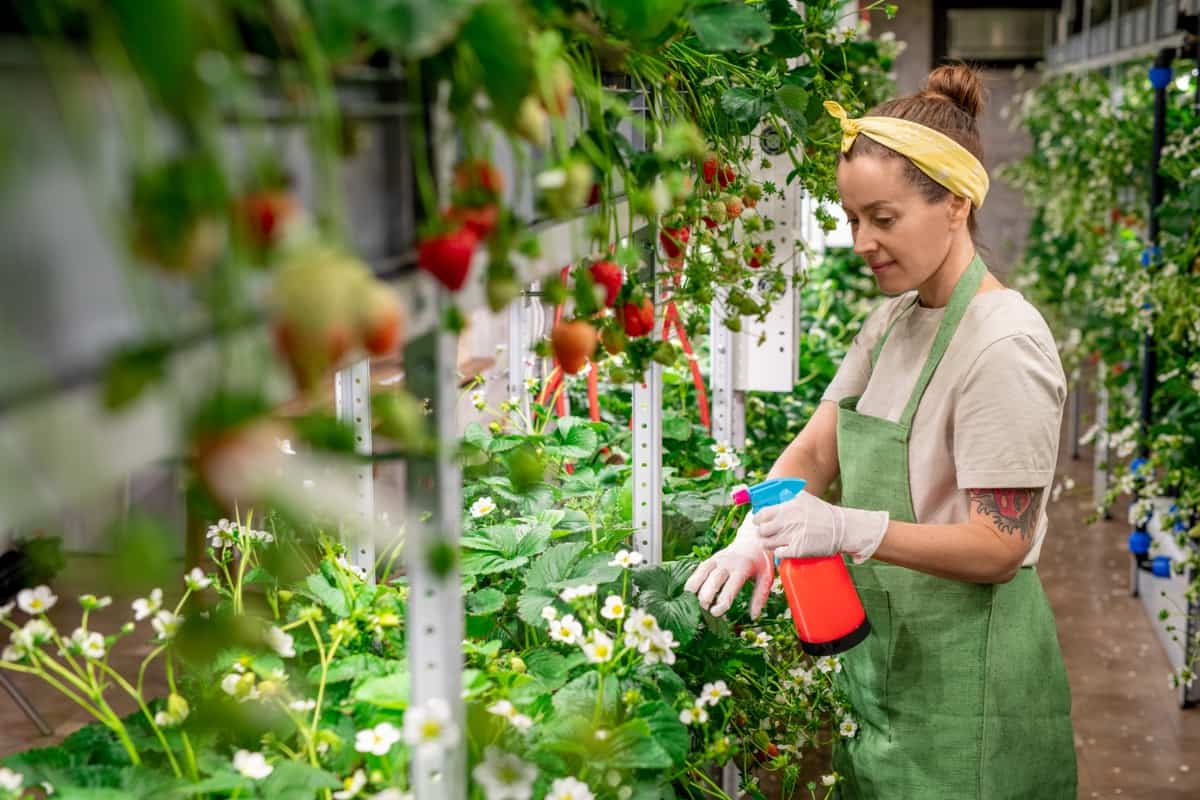
- Integrated Pest Management (IPM): Tailored strategies for vertical farms focus on preventing, monitoring, and controlling pests and diseases through a combination of cultural, physical, biological, and chemical interventions.
- Regular Crop Scouting: Detect early signs of pest and disease presence through regular crop scouting, enabling timely action to be taken.
- Beneficial Insects and Biological Control Agents: Utilize natural enemies such as beneficial insects to control common strawberry pests like aphids, thrips, and mites without the need for chemical pesticides.
- Sterilization Techniques: Employ proper sterilization techniques to reduce the risk of disease outbreaks, maintaining strict hygiene practices in the vertical farm environment.
By adopting a proactive and comprehensive approach to pest and disease management, vertical farmers can minimize crop losses, optimize yields, and ensure the production of healthy and high-quality strawberries.
Understanding the Role of Pollination in Strawberry Yields in Vertical Farms
Pollination plays a crucial role in maximizing strawberry yields in vertical farms. As strawberries are flowering plants, they require the transfer of pollen from the male reproductive organs (anthers) to the female reproductive organs (stigma) for successful fertilization and fruit development.
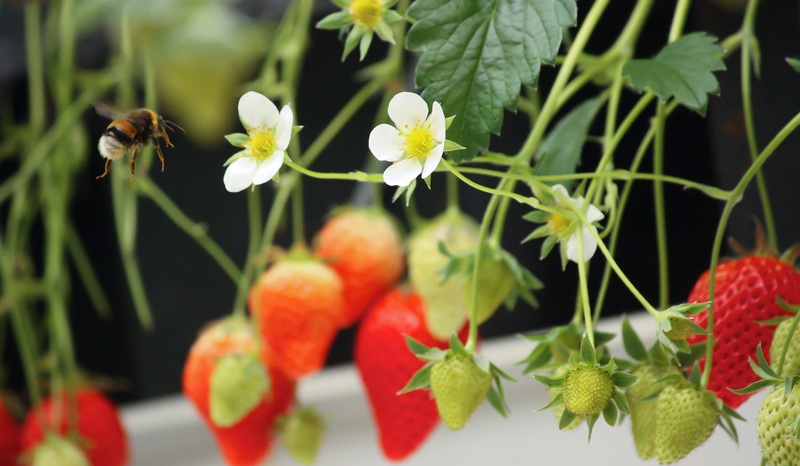
- Manual Pollination:
- In controlled environments like vertical farms, where insect activity is limited, manual pollination is essential.
- Brushing Method:
- Gently brush the stigma of each strawberry flower with a soft paintbrush or feather.
- Transfer pollen from the anthers to mimic natural bee pollination.
- Vibrating Technique:
- Use handheld vibrating devices to gently shake the flowers.
- Dislodge pollen and facilitate movement between reproductive organs.
- These methods increase the chances of successful fruit set and berry development.
- Importance of Pollination:
- Proper pollination ensures:
- Fruit quality
- Optimal yields
- Prevention of misshapen or undersized fruits.
- Proper pollination ensures:
- Grower Responsibility:
- Vertical farm operators must understand and implement effective pollination strategies.
Without proper pollination, strawberries may develop misshapen or undersized fruits, or fail to produce any fruit at all. Therefore, it is important for vertical farm operators to understand and implement effective pollination strategies to ensure optimal strawberry yields.
Harvesting and Post-Harvest Practices for Preserving Strawberry Quality in Vertical Farms
When it comes to harvesting and post-harvest practices for preserving strawberry quality in vertical farms, several key considerations should be taken into account. Firstly, it is crucial to determine the optimal stage of ripeness at which to harvest the strawberries. This can be determined by assessing the fruit’s color, firmness, and sweetness. Harvesting strawberries that are fully ripe ensures the best flavor and quality.
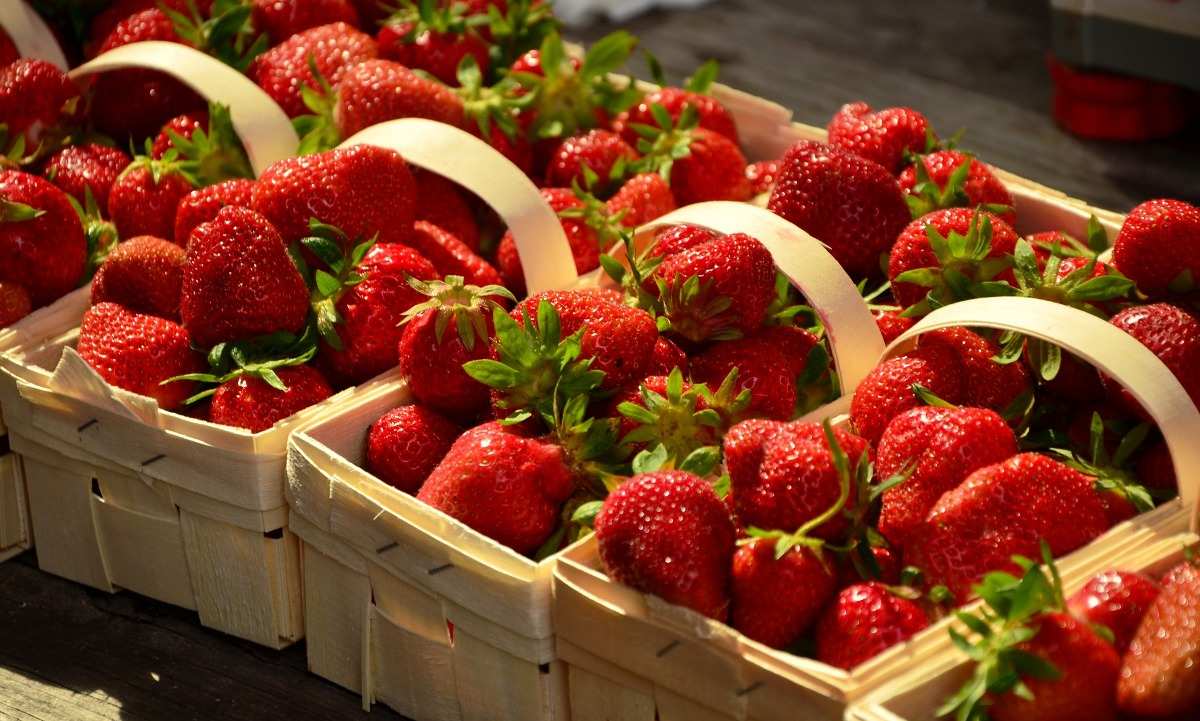
- Proper Packaging:
- Use packaging materials that protect the fruit from physical damage and minimize bruising.
- Opt for breathable packaging to prevent moisture buildup, which can lead to mold and decay.
- Storage Conditions:
- Maintain the right temperature and humidity levels:
- Cold Storage: Commonly used to extend shelf life.
- Flavor and Texture: Cold storage helps preserve the flavor and texture of the berries.
- Maintain the right temperature and humidity levels:
- Post-Harvest Practices:
- Follow best practices for handling and storing strawberries.
- Ensure that the fruit reaches consumers in optimal condition.
Remember, attention to detail during post-harvest handling contributes to the overall quality of strawberries! 🍓🌿
Evaluating and Adjusting Vertical Farming Techniques to Continuously Improve Strawberry Yields
Evaluating and adjusting vertical farming techniques is crucial for continuously improving strawberry yields in controlled environments. Vertical farming offers numerous advantages for strawberry production, such as maximizing space utilization, reducing water and pesticide usage, and providing optimal conditions for growth. However, to ensure optimal yields, continuous evaluation and adjustment of farming techniques are necessary.
- Nutritional Requirements:
- Comprehensive Soil Analysis: Understand the specific nutrient needs of strawberries.
- Monitoring Nutrient Levels: Regularly assess nutrient levels throughout the growth cycle.
- Fine-Tuning Nutrient Solutions: Adjust nutrient solutions or incorporate additives to address deficiencies or imbalances.
- Enhanced Strawberry Yields: Proper nutrition leads to better fruit production.
- Irrigation Techniques:
- Adequate Water Supply: Ensure consistent water availability for optimal plant growth.
- Evaluation of Methods:
- Drip Irrigation: Precise water delivery directly to the root zone.
- Aeroponics: Mist-based irrigation system.
- Fine-Tuning Practices:
- Monitor moisture levels, root health, and plant responses.
- Adjust irrigation techniques accordingly.
- Improved yields through effective water management.
- Sustainability and Efficiency:
- Continuously evaluate and adjust vertical farming practices.
- Contribute to overall sustainability by minimizing water waste.
- Efficient irrigation supports resource conservation.
- Future Prospects:
- Stay informed about advancements and research.
- Implement innovative techniques for continuous improvement.
- Promising future for sustainable strawberry cultivation in vertical farms.
By staying informed and open to experimentation, growers can refine their techniques over time, ensuring continuous improvement and promising prospects for future strawberry cultivation in vertical farms.
Future Innovations and Research in Maximizing Strawberry Yields with Coco Coir and Vertical
As the field of vertical farming continues to evolve, there is a growing interest in maximizing strawberry yields using coco coir and vertical systems. Researchers and experts are actively exploring future innovations and conducting research to uncover new ways to optimize this growing method. These efforts aim to enhance strawberry production, improve crop quality, and increase overall yields.
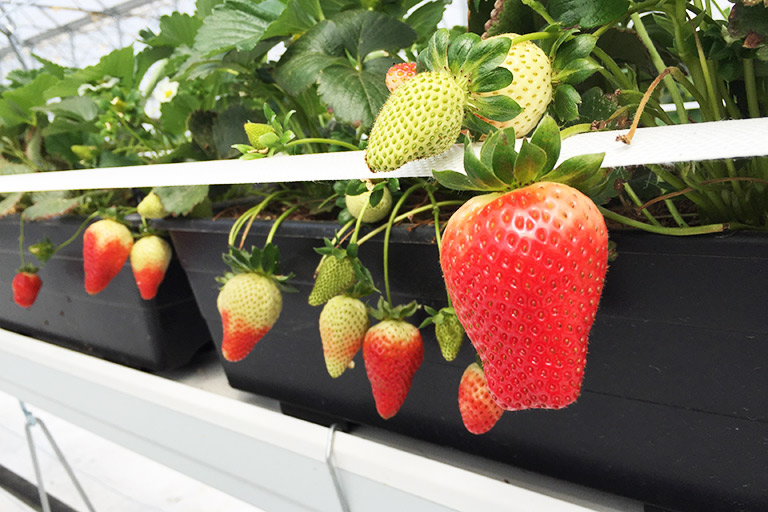
- Precision Irrigation Systems:
- Tailored for strawberry cultivation in vertical farms.
- Maintain optimal moisture levels for plant growth.
- Prevent compromise in growth and development.
- Ongoing exploration of automated irrigation systems that adjust watering schedules based on real-time plant needs.
- Potential to significantly improve water efficiency.
- Novel Lighting Technologies:
- Investigating effects of different light spectra and intensity levels on strawberry plants.
- Fine-tuning lighting conditions to promote:
- Optimal photosynthesis
- Flowering
- Fruiting
- LED lighting systems show promise:
- Energy-efficient
- Long-lasting
- Customizable for strawberry requirements.
- Future Prospects:
- Vertical farming with coco coir holds tremendous potential.
- Focus on irrigation optimization and advanced lighting systems.
- Promises sustainable and efficient cultivation methods.
- A bright future for maximizing strawberry yields!
In conclusion, ongoing research and future innovations in vertical farming with coco coir hold tremendous potential for maximizing strawberry yields. By optimizing irrigation techniques and implementing advanced lighting systems, growers can unlock new possibilities in terms of crop quality and productivity. These advancements offer sustainable and efficient methods of cultivation to meet the growing demand for strawberries.
Watch video for more information:
FAQ
What are the benefits of vertical farming for strawberry production?
Vertical farming offers several benefits for strawberry production, including maximizing space utilization, reducing the need for land, and providing optimal growing conditions for strawberries.
How does coco coir contribute to vertical farming for strawberry yields?
Coco coir serves as a growing medium in vertical farming, providing excellent water retention, aeration, and nutrient-holding capacity, which promotes healthy root development and enhances strawberry yields.
What are the nutritional requirements of strawberries in vertical farms?
Strawberries in vertical farms require a balanced supply of essential nutrients such as nitrogen, phosphorus, potassium, as well as trace elements like calcium, magnesium, and iron for optimal growth and high yields.
How do I choose the right coco coir for strawberry cultivation in vertical farms?
When selecting coco coir for strawberry cultivation in vertical farms, consider the quality, density, and water retention capacity of the coco coir. It should be free from pathogens and salts and should promote good root development.
How should I prepare coco coir for optimal strawberry growth in vertical farms?
Prior to use, coco coir should be properly washed and buffered to remove any excess salts and adjust the pH levels. This helps create an ideal growing environment for strawberries in vertical farms.
Why is proper irrigation technique important in maximizing strawberry yields?
Proper irrigation techniques ensure that strawberry plants receive adequate moisture without waterlogging. This helps prevent root rot and other water-related diseases, leading to healthier plants and higher yields.
What is controlled environment agriculture and how does it boost strawberry production?
Controlled environment agriculture involves creating a controlled environment with precise control over temperature, humidity, light, and other factors. This allows for optimal growing conditions for strawberries, resulting in improved yields.
How can temperature and humidity be managed in vertical farms for strawberry cultivation?
Temperature and humidity in vertical farms can be managed through the use of climate control systems, ventilation, shading, and misting. Maintaining the ideal temperature and humidity range is crucial for optimal strawberry growth.
How does artificial lighting contribute to enhanced strawberry yields in vertical farms?
Artificial lighting, such as LED grow lights, provides the necessary light spectrum for photosynthesis and allows for year-round strawberry production in vertical farms. It can supplement natural light or be used as the primary light source.
What factors should be considered when optimizing vertical farm layouts for efficient strawberry production?
When optimizing vertical farm layouts for strawberry production, factors such as light distribution, accessibility for maintenance and harvesting, and efficient space utilization should be considered to maximize productivity.
What is the proper plant spacing and density for maximizing strawberry yields in vertical farms?
The proper plant spacing and density will depend on the specific strawberry variety and the vertical farming system used. Generally, plants should be spaced to allow for adequate airflow and light penetration while maximizing space utilization.
What are the recommended pruning and training techniques for strawberry plants in vertical farms?
Pruning and training techniques such as removing runners, thinning leaves, and training the plants along trellises or support structures help maintain plant health, enhance light distribution, and improve overall strawberry yields in vertical farms.
How can pest and disease management be addressed in vertical farming for strawberries?
Pest and disease management in vertical farming can be addressed through the implementation of integrated pest management strategies, including regular monitoring, biological controls, and the use of organic and chemical interventions when necessary.
What is the role of pollination in strawberry yields in vertical farms?
Pollination is crucial for strawberry yields as it allows for the transfer of pollen between flowers, leading to fruit development. In vertical farms, pollination can be facilitated manually or by introducing pollinators such as bees or using techniques like vibration.
What are the recommended harvesting and post-harvest practices for preserving strawberry quality in vertical farms?
Strawberries should be harvested when fully ripe and handled carefully to avoid bruising or damage. Post-harvest practices such as immediate cooling, refrigeration, and proper packaging help preserve the quality and shelf life of strawberries in vertical farms.
How can vertical farming techniques be continuously improved to maximize strawberry yields?
Vertical farming techniques can be continuously improved through ongoing research and innovation. This includes exploring new technologies, refining cultivation practices, and adapting to emerging challenges to optimize strawberry yields in vertical farms.
What future innovations and research are being conducted to maximize strawberry yields with coco coir and vertical farming?
Ongoing research focuses on developing new varieties of strawberries that are well-suited for vertical farming, optimizing nutrient solutions for coco coir cultivation, and refining vertical farming systems to further enhance strawberry yields.

Studied Agricultural Engineering-Plant Protection at University of California, Davis.
Head of Content writing team at Southelmontehydroponics.com

